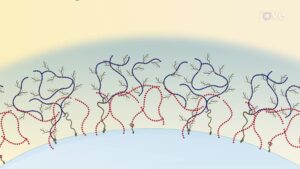Understanding Testosterone: Key Differences, Risks, and Natural Solutions
Testosterone is often thought of as a “male hormone,” but it plays a vital role in both men and women. While levels and effects differ between sexes, imbalances can contribute to fatigue, reduced libido, brain fog, and changes in body composition. Understanding how testosterone works—and how to support healthy levels—can make a major difference in energy, mood, and long-term health.
How Testosterone Affects Men and Women
Although testosterone exists in both sexes, men typically rely on it more heavily. Baseline testosterone levels in men are ten to twenty times higher than in women, meaning men are more vulnerable to noticeable declines. Women, on the other hand, primarily depend on estrogen and progesterone, though testosterone still plays a supportive role in muscle mass, mood, and sexual health.
Normal blood test ranges illustrate this difference. For men, a healthy total testosterone level often falls between 500 and 900 ng/dL. For women, the total range is much lower—typically 15 to 70 ng/dL. Even within these ranges, the more relevant measure is “free testosterone,” which refers to the active form that binds to receptors and produces effects in the body.
Symptoms of Low Testosterone
Low testosterone may not always be obvious. In both men and women, it tends to present with nonspecific symptoms such as:
- Fatigue and reduced stamina
- Lowered sex drive
- Loss of muscle mass
- Brain fog or difficulty concentrating
In men, testosterone decline is strongly linked to increased risk of cardiovascular disease, abdominal fat gain, and overall metabolic issues. For women, the impact is generally less severe due to estrogen’s protective role, but imbalances can still alter fat distribution, particularly leading to abdominal weight gain after menopause, which itself increases cardiovascular risks.
Hormone Balance and Cardiovascular Health
Low testosterone is a recognized risk factor for heart disease in men, while in women, declining estrogen tends to be the bigger driver. That said, testosterone deficiency in women can still contribute to negative health effects when combined with other hormonal changes. Fat accumulation, particularly visceral fat, is one of the strongest predictors of cardiovascular risk across sexes.
Maintaining balanced testosterone levels—not too high and not too low—is essential. Excess testosterone can convert into estrogen in body fat, disrupting the delicate interplay of hormones such as progesterone, DHEA, and cortisol. This is why responsible management is critical when considering hormone replacement therapy.
Treatment Options: Conventional and Integrative Approaches
When low testosterone is confirmed through proper lab testing, treatment options vary. Physicians may recommend bioidentical hormone replacement therapy delivered via creams, gels, injectables, or pellets. Topical creams and gels are often preferred because they allow more controlled dosing, while injectables and pellets can sometimes lead to excessively high hormone levels.
Oral testosterone is generally discouraged due to potential risks such as blood clot formation. Any form of therapy must be carefully monitored to ensure that testosterone stays within the physiological range, avoiding imbalances that can cause more harm than benefit.
Natural Ways to Support Testosterone Levels
Before turning to hormone replacement, many individuals can benefit from lifestyle changes that naturally optimize testosterone. Evidence-based approaches include:
- Exercise: Resistance training and high-intensity interval training (HIIT) are proven to support testosterone production.
- Sleep: Getting 7–9 hours of quality sleep helps regulate the hypothalamic-pituitary-gonadal axis, which governs hormone balance.
- Stress Management: Chronic stress and elevated cortisol suppress testosterone. Practices like meditation, yoga, and breathing techniques can help.
- Weight Management: Healthy body composition improves hormone function and reduces estrogen dominance caused by excess fat.
Key Nutrients and Supplements
Certain micronutrients are especially important for maintaining healthy testosterone levels:
- Zinc: 30–50 mg daily supports testosterone synthesis and immune health (PubMed).
- Magnesium: 300–400 mg daily assists in testosterone metabolism and reduces inflammation.
- Vitamin D: 2000–4000 IU daily is linked to higher testosterone and improved bone health (NIH).
- Herbal Adaptogens: Fenugreek, ashwagandha, and tribulus have been studied for their potential to raise testosterone naturally.
When Testosterone Is Too High
While low testosterone is more common, some individuals—particularly women with polycystic ovarian syndrome (PCOS)—may experience abnormally high levels. Symptoms can include irregular cycles, weight gain, and insulin resistance. In these cases, reducing testosterone is the goal. Simple approaches such as spearmint tea and weight loss have been shown to help. Myo-inositol supplements may also support better hormonal balance in women with PCOS.
Maintaining Balance Over the Long Term
Testosterone is only one part of the broader hormone network. Raising levels without considering estrogen, progesterone, and cortisol can lead to complications. Any strategy—natural or clinical—should focus on restoring balance rather than chasing high numbers. Moderate, physiological levels tend to deliver the greatest long-term benefits, including improved energy, lean muscle preservation, healthy fat distribution, and cardiovascular protection.
Video Summary
For more evidence-based nutrition and fitness tips, subscribe to our channel: https://www.youtube.com/@Vitality-and-Wellness
Looking for extra help with your fitness goals? Check out the personalized Nutrition Program at Parkway Athletic Club: parkwayathleticclub.com/nutrition
Disclaimer: This content is for educational purposes and does not replace personalized medical advice.



